 |
 |
 |
 |
 |
 |
 |
 |
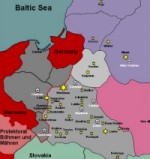 |
| Ghettos |
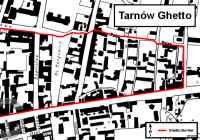 |
| Ghetto Map |
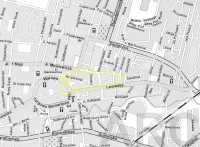 |
| The former Ghetto |
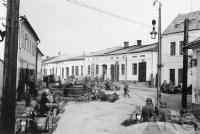 |
| Occupation of Tarnow |
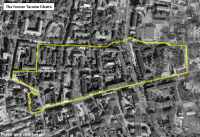 |
| Aerial Photo |
The establishment of the Tarnow Ghetto was formally announced in March 1941. It remained open for 3 months. At the beginning of June Jews from the surrounding district were relocated to Tarnow, and the population of the ghetto rose to 40,000. The Jews had very little food, as the German Supply Department did not issue them with sufficient rations and they were forbidden on pain of death to smuggle extra food into the ghetto. As a result a state of famine prevailed in the ghetto.
The First Aktion - June 1942
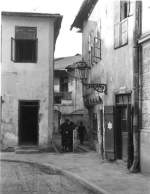 |
| The Ghetto in 1940 |
Due to the enormous task represented by the first Aktion, the security services sought assistance from the local and district police, a company of Waffen-SS (commanded by SS-Hauptsturmführer Klienow, stationed at Debica Training Camp), the Sonderdienst (Special Services), the Baudienst (Polish pioneer service) and several employees of the Tarnow labour exchange.
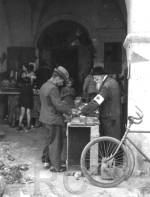 |
| The Ghetto in 1940 |
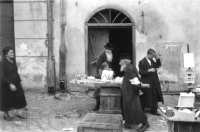 |
| The Ghetto in 1940 |
On 24-25 July 1942 the Jews were ordered out of their houses. They all had to remove their shoes and, barefoot, were driven with rifle butts and whips into the market square. Children were taken from their parents to a nearby shed and shot. Some Jews were selected for forced labour; the rest were deported to Belzec. This second Aktion was conducted on direct orders from F.W. Krüger, and the inhabitants were notified by an announcement by Dr Pernutz, deputy town major. The Aktion targeted the old, those sick and unfit for work, women and children. It was also known as the Kinderaktion ("Children action") because of the large numbers of children killed.
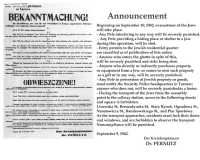 |
| Order from September 1942 |
In charge was Gestapo chief Palten. The Jews were selected for either deportation or work. The selection was again accompanied by acts of brutality. Jews were made to kneel on the ground for many hours and shot dead for no apparent reason. SS officers Oppermann and Libor displayed particular cruelty. The Jews were then made to march in double file past a table near the main gate of the ghetto which was manned by the Gestapo. Those able to show permits with the seal of the Gestapo were sent to one side; those whose permits had no seal were sent to the other side. Jews were shot dead on the slightest pretext. Even the wives and children of those selected to live were not spared; they were brutally taken away by the Gestapo and loaded onto lorries. Parents who refused to give up their children were simply shot on the spot. A local taxi driver was ordered to organise vehicles to take several hundred old and sick Jews to the cemetery, where the victims were made to undress and then shot.
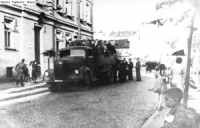 |
| Deportation to Pustkow |
In October 1942 the ghetto was divided into two parts. Section A was organised as a forced labour camp with separate quarters for men and women. Its commander was SS-Hauptsturmführer Blacher, and it housed Jewish men, women and children aged over 12 years, all of whom were organised into working squads. This section was known as Zwangsarbeitslager Tarnow. Section B held all Jews who did not work and Jewish labourers with large families. Its commander was SS-Oberscharführer Grunoff. The Jews were not allowed to move from one ghetto to the other.
On 15 November 1942 another Aktion took place in Tarnow. SS-Hauptsturmführer Palten was again in charge. A significant number of Ghetto B inhabitants decided to hide in shelters, basements and other places to avoid detection. The Ghetto A Jews left for work. The Ghetto B Jews were ordered to report to the Magdeburger Platz, where they were made to surrender all valuables. They were ordered to kneel down while Gestapo officers Palten, Rommelmann, Grunow, Jeck, Oppermann, Gaa and Libor checked their documents in a brutal fashion. Gestapo officer Gaa went with the head of the Jewish order police, Bienenstock, to the tailor’s workshop administered by Lauer, where several Jews were working. Among this group of Jewish workers were David Fromowicz and his wife Chaja, who were both arrested and taken to the collecting point on the square.
At about midday the selected 2,500 Jews at the square were lined up in columns and marched under guard to the station, where they were loaded into goods wagons which were then closed and sealed with lead. The train left Tarnow station at about 6 p.m., stopping at Rzeszow station where other wagons loaded with Jews were coupled to the train. At midnight the train left Rzeszow and headed for Belzec via Rawa Ruska. In the region of Rawa Ruska David and Chaja Fromowicz, with other Jews, climbed through the air-vents in their wagon and jumped clear while the train was moving. They returned to the Tarnow ghetto.
In early January 1943 SS-Oberscharführer Blache took over command of the ghetto. This mainly involved supervising the Jewish labour force and safeguarding the property left behind by the deported Jews. In the summer of 1943 there were still about 9,000 Jews in sections A and B of the ghetto.
The Final Liquidation - August/September 1943
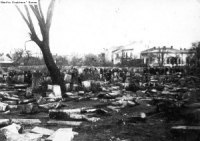 |
| Destroyed Jewish Cemetery |
Scherner took a particularly sinister and deadly decision by placing SS-Hauptsturmführer Amon Göth, the liquidator of the ghettos in Lublin, Rzeszow, Bochnia, Przemysl, and Krakow, and the Szebnie camp, in charge of the operation.
At the end of August 1943 a further conference was held to fine-tune the plans for the final liquidation of the ghetto. 200 Jewish men and 100 Jewish women were to remain in the ghetto to serve as a cleaning-up party. 2,000 Jews from the Madritsch clothing factory were transferred to Plaszow. The approximately 6,000 remaining Jews were to receive "special treatment" in Auschwitz-Birkenau.
On the morning of 3 September 1943 SS/SD and other forces surrounded the ghetto. The working Jews from Ghetto A paraded as on any other day, the Jews in Ghetto B also gathered in the Magdeburger Platz. The Jewish clearing command was organised and made to parade in the grounds of the Singer crate factory, which proved to be extremely suitable for the purpose because it was already fenced. A sentry was posted at the entrance to the factory grounds to prevent Jews selected for deportation from slipping into the rear cleaning party. Next followed the selection of Jews from Ghetto A for employment at the Plaszow forced labour camp.
Many Jews realised the Jews in the Singer factory grounds were not slated for immediate deportation and tried to join them. Göth and his colleagues had anticipated this move, and set about ill-treating the Jews who attempted to escape. Göth walked through the rows of Jews with his pistol drawn, shouting and dealing out blows. He immediately shot dead some Jews who were slow to act. He hit a Jewish woman called Zimmermann so hard that she fell to the ground, dead. Jews were shot out of hand and their bodies strewn across the square. Jews hiding in their houses were shot on the spot.
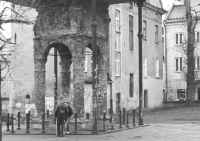 |
| Remnants of a Tarnow Synagogue |
About 50 Jews who had attempted to smuggle small children with them out of the ghetto in rucksacks were taken out of the transport and driven back by lorry to the ghetto, where Göth and other SS-men started shooting at them. They were all killed.
The Nazi occupation of Tarnow ended on 18 January 1945 when the Soviet Army entered the city.
Trials
Many members of the SS/SD and auxiliary forces, responsible for the extermination of the Tarnow Jews, had died before investigations were launched in the 1960ies. However, three major former members of the Sicherheitspolizei-Außenstelle (Security Police - Field Office) were charged with crimes in Tarnow.
Karl Oppermann was accused of the murder of at least 156 members of the Jewish community of Tarnow and the deportation of about 23,000 Jews to the extermination camps of Belzec and Auschwitz.
Gaa was charged with compliance with execution orders involving the death of at least 25 members of the Jewish community of Tarnow and the deportation of about 8,500 Jews to the extermination camps of Belzec and Auschwitz.
Libor was accused of compliance with execution orders involving the death of at least 13 members of the Jewish community of Tarnow and the deportation of about 13,600 Jews to the extermination camps of Belzec and Auschwitz.
Sentences
Case Nr.571
Crime Category: Mass Extermination Crimes in Camps
Accused:
Blache, Hermann life sentence + 6 Years
Court:
LG Bochum 640430
Country where the crime was committed: Poland
Crime Location: Tarnow, HS ZAL Tarnow
Crime Date: 4306-4402 (June 1943 - February 1944)
Victims: Jews
Nationality: Polish
Office: Haftstättenpersonal ZAL Tarnow
Subject of the proceeding: Individual shootings of at least 22 Jewish prisoners from Tarnow forced labour camp. Participation in the liquidation of the Tarnow ghetto, in the course of which at least 4,000 Jewish men, women and children were deported to KL Auschwitz. Shooting of Jews who had hidden themselves or their children to escape deportation.
Published in "JusVerfahren Lfd.Nr. 710"
Tatkomplex: Andere Massenvernichtungsverbrechen
Angeklagte:
G., Gerhard Verfahren eingestellt
Oppermann, Karl lebenslänglich
Gerichtsentscheidungen:
LG Bochum 690710
BGH 730320
Tatland: Polen
Tatort: Tarnow
Tatzeit: 1940-1943
Opfer: Juden
Nationalität: Polnische
Dienststelle: Polizei Sipo Tarnow
Verfahrensgegenstand: Deportation von Juden aus dem Ghetto Tarnow ins KL Belzec sowie Erschießungen im Ghetto.
 |
| 40,000 Jews lived in the ghetto |
Sources:
Robin O’Neil - Selected extracts from unpublished research on Belzec and the Ghettos of Galicia
Encyclopedia of the Holocaust
© ARC (http://www.deathcamps.org) 2005